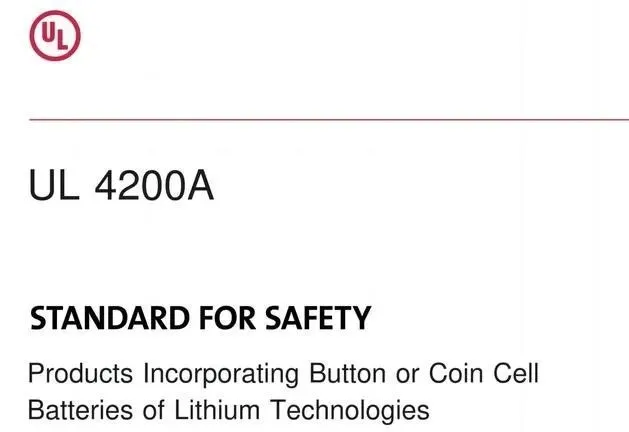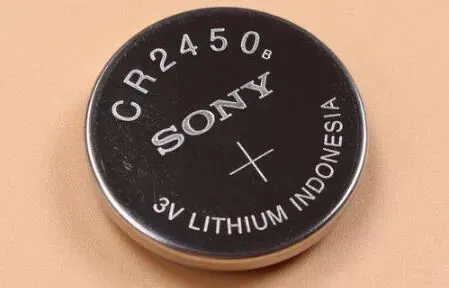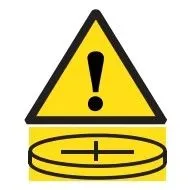
Quartz Watch Amazon UL 4200A:2023 Report
To protect children and other consumers from the hazards of accidental ingestion of button or coin batteries, the U.S. Consumer Product Safety Commission issued a notice in September 2023. It decided to adopt ul4200a:2023 as the mandatory safety standard for consumer products containing button/coin batteries, incorporating it into 16 cfr part 1263, to be enforced starting March 19, 2024: UL4200A:2023 Safety Standard.

What is a button battery?
A button battery is a small battery with dimensions similar to a button, typically used in small electronic devices. Button batteries have a larger diameter and are thinner, with common models including CR2032, CR2025, etc. Button batteries are also known as coin batteries or button cells, and they are widely used as backup power in various electronic devices such as computer motherboards, electronic watches, electronic dictionaries, electronic scales, remote controls, electric toys, pacemakers, electronic hearing aids, counters, and cameras.

What is a quartz watch?
A quartz watch generally refers to a watch that uses a quartz crystal to keep time. Most of these watches are poweRED by button batteries. Therefore, when referring to a “quartz watch,” it is typically assumed to have a button battery. Thus, quartz watches sold on Amazon in the U.S. need to provide a ul4200A:2023 report.
When will the new standard be enforced?
The new standard will be enforced starting March 19, 2024.
Which products need UL4200A:2023 testing?
All products containing button batteries and sold in the U.S. must undergo UL4200A:2023 testing.
Warning Labels
Product Body Warning Labels:
1. If there is enough space on the product body, use the label shown in Figure 7C.1:

2. If there is not enough space on the product body, you can use the label shown in Figure 7C.2, but you need to explain the meaning of this symbol in the product manual or other printed materials or tags included with the product packaging:

3. If there is not enough space on the product body for either Figure 7C.1 or Figure 7C.2 labels, the product packaging should meet the packaging warning label requirements, or use tags to include the full packaging warning label requirements.
External Packaging Warning Labels:
1. If there is enough main space on the packaging, use Figure 7B.1 or Figure 7B.2:


2. If there is not enough main space on the packaging, you can use Figure 7B.3 in the main space and Figure 7B.4 in the secondary space. Note that using only one is not sufficient.


3. Regardless of whether there is space on the body, packaging warning labels are necessary.
Note: Usage of Warning Labels
1. When the label has multiple colors, ensure the colors match those on the above warning labels;
2. The icon size must be at least 7mm wide and 9mm high, and the icon in Figure 7B.2 must be at least 8mm in diameter;
3. Labels must use the official language of the country where the product is sold, or if there is no official language, use English.
What does the UL4200A:2023 test cover?
1. Drop test;
2. Impact test;
3. Crush test;
4. Torque test;
5. Tension test;
6. Compression test;
7. Secure installation test.
Recently, the scrutiny for products containing button/coin batteries entering the U.S. market has become particularly stringent. Domestic exporters are advised to test their products before export or listing on platforms to prove they meet safety standards.
How much does the UL4200A test report cost?
JJRLAB is a Chinese laboratory, so we can help you save 30% on certification costs. Our UL4200A test report costs $480.
Email:hello@jjrlab.com
Write your message here and send it to us
 What Certifications for Exporting Monitors to Euro
What Certifications for Exporting Monitors to Euro
 Bluetooth Headphones Exported to Australia Certifi
Bluetooth Headphones Exported to Australia Certifi
 What Certifications for Router Products Exported t
What Certifications for Router Products Exported t
 TIC (Power Bank UL 2056, Portable Power Station UL
TIC (Power Bank UL 2056, Portable Power Station UL
 How to get EN 18031 Certification for Wireless Pro
How to get EN 18031 Certification for Wireless Pro
 PSE, TELEC and VCCI Compliance for Cameras Exporte
PSE, TELEC and VCCI Compliance for Cameras Exporte
 NOM & IFT Compliance for Audio Equipment Expor
NOM & IFT Compliance for Audio Equipment Expor
 FCC, CE & EMC Compliance for Printers Exported
FCC, CE & EMC Compliance for Printers Exported
Leave us a message
24-hour online customer service at any time to respond, so that you worry!




